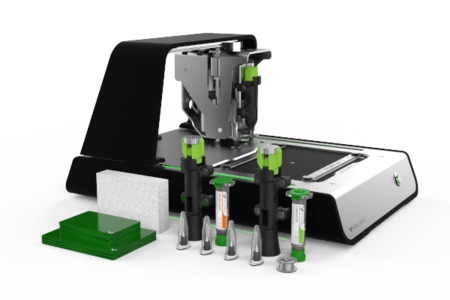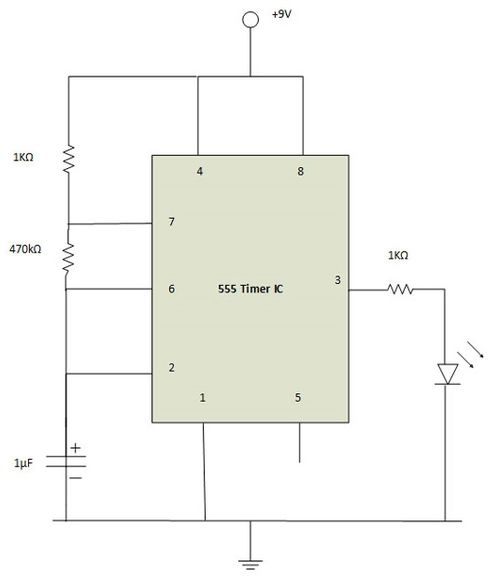Difference between revisions of "PCB Printer"
Jwhipple15 (talk | contribs) (Created page with "{{#set: |Is equipment=True |Is located in facility=PCB Lab |Is located in facility=The Hub |Is used in domain=Electronics |Has function=Soldering Iron |Has icon=File:sol...") |
Jwhipple15 (talk | contribs) |
||
| Line 25: | Line 25: | ||
Important Note: One should never use the abrasive tip tinner on the Metcal tips. This can damage them. | Important Note: One should never use the abrasive tip tinner on the Metcal tips. This can damage them. | ||
| − | + | ||
| − | |||
== Documentation == | == Documentation == | ||
| − | + | ||
| − | |||
| − | |||
| − | |||
== Training == | == Training == | ||
| − | + | ||
<!-- | <!-- | ||
| Line 43: | Line 39: | ||
* [[Media:WellerBetterSolderingBooklet.pdf|Better Soldering Booklet]] | * [[Media:WellerBetterSolderingBooklet.pdf|Better Soldering Booklet]] | ||
--> | --> | ||
| + | |||
=== Videos === | === Videos === | ||
After scouring the web for examples of soldering training, we really liked the lessons captured in the [https://www.youtube.com/playlist?list=PL926EC0F1F93C1837 PACE] series, despite the fact that they were filmed in the 80's. These videos are well produced (for something possibly older than your parents) and have a lot of good information. The quizzable information is in the very first, fifth, and sixth videos, but the other videos have great examples of good and bad soldering joints. | After scouring the web for examples of soldering training, we really liked the lessons captured in the [https://www.youtube.com/playlist?list=PL926EC0F1F93C1837 PACE] series, despite the fact that they were filmed in the 80's. These videos are well produced (for something possibly older than your parents) and have a lot of good information. The quizzable information is in the very first, fifth, and sixth videos, but the other videos have great examples of good and bad soldering joints. | ||
| Line 81: | Line 78: | ||
===== Basic Soldering Lesson 2-5 ===== | ===== Basic Soldering Lesson 2-5 ===== | ||
| − | |||
| − | |||
| − | |||
| − | |||
| − | |||
| − | |||
| − | |||
| − | |||
===== Basic Soldering Lesson 3 ===== | ===== Basic Soldering Lesson 3 ===== | ||
| − | |||
| − | |||
===== Basic Soldering Lesson 4 ===== | ===== Basic Soldering Lesson 4 ===== | ||
| − | + | ||
| − | |||
===== Basic Soldering Lesson 5 ===== | ===== Basic Soldering Lesson 5 ===== | ||
| − | |||
| − | |||
--> | --> | ||
===== Basic Soldering Lesson 6 ===== | ===== Basic Soldering Lesson 6 ===== | ||
| − | + | ||
| − | |||
===== Basic Soldering Lesson 7 ===== | ===== Basic Soldering Lesson 7 ===== | ||
| − | |||
| − | |||
===== Basic Soldering Lesson 8-9 ===== | ===== Basic Soldering Lesson 8-9 ===== | ||
| − | |||
| − | |||
| − | |||
| − | |||
| − | |||
| − | |||
===== Basic Soldering Lesson 9 ===== | ===== Basic Soldering Lesson 9 ===== | ||
| − | + | ||
| − | |||
| − | |||
==== Howcast How to Solder ==== | ==== Howcast How to Solder ==== | ||
| Line 168: | Line 141: | ||
<gallery> | <gallery> | ||
File:blinkypcb.jpg|[[Media:Blinky.zip|PCB]] | File:blinkypcb.jpg|[[Media:Blinky.zip|PCB]] | ||
| − | |||
| − | |||
| − | |||
| − | |||
| − | |||
| − | |||
| − | |||
</gallery> | </gallery> | ||
Revision as of 08:45, 6 July 2018
Soldering is a process in which two or more items (usually metal) are joined together by melting and putting a filler metal (solder) into the joint, the filler metal having a lower melting point than the adjoining metal. Soldering differs from welding in that soldering does not involve melting the work pieces. In brazing, the filler metal melts at a higher temperature, but the work piece metal does not melt. In the past, nearly all solders contained lead, but environmental and health concerns have increasingly dictated use of lead-free solder for electronics and plumbing purposes.
Maker Hub Soldering Irons
The Weller irons use a resistive tip to generate heat. By varying the power through the tip, the temperature can be controlled. The Metcal uses an inductive tip that is tuned to be at one temperature. Important Note: One should never use the abrasive tip tinner on the Metcal tips. This can damage them.
Documentation
Training
Videos
After scouring the web for examples of soldering training, we really liked the lessons captured in the PACE series, despite the fact that they were filmed in the 80's. These videos are well produced (for something possibly older than your parents) and have a lot of good information. The quizzable information is in the very first, fifth, and sixth videos, but the other videos have great examples of good and bad soldering joints. <!== Another more modern video from Beauty and the Bolt is also insightful. TThis video is a little more modern, and a good resource, but not as technically interesting. It talks a bit about desoldering as well as soldering wires together and how to use heat shrink and electrical tape. ==>
A more modern series is available from Howcast. It wouldn't hurt at all to watch this series, but we will just focus on a couple for the quiz.
Finally, there is an official training video from the Maker Hub that is tailored to our specific space and equipment. This video will give you the information you need to perform the live solder demonstration required for your soldering certification.
PACE Basic Soldering Series
This nostalgic set of videos from PACE are quite old, but surprisingly still quite relevant. The style makes you think that you will be getting ready to watch an old Disney cartoon - you aren't. Don't get disappointed.
Basic Soldering Lesson 1
This is by far the longest of the videos at (20:44), but also packed with the most pertinent information. It provides great background on solder, flux, wetting, and then mechanics of the iron and the joint. We do not have the student handbook that is mentioned. We suspect that you can manage without that. Here are some key ideas that you should watch for:
- What is solder?
- What temperatures do the different solders melt at?
- What is flux?
- What is wetting?
- What are the different aspects of a soldering iron?
Basic Soldering Lesson 2-5
Basic Soldering Lesson 3
Basic Soldering Lesson 4
Basic Soldering Lesson 5
-->
Basic Soldering Lesson 6
Basic Soldering Lesson 7
Basic Soldering Lesson 8-9
Basic Soldering Lesson 9
Howcast How to Solder
This set of videos from Howcast is worth watching, but we will only highlight a couple of them here that talk about removing solder.
How to Remove Solder
How to Remove Through-Hole Components
Maker Hub Video
This video contains specific information for soldering in the Maker Hub as well as a basic overview of what will be expected in your live demonstration.
Certification
FoxTale Course
To obtain certification for using the soldering irons in the Maker Hub, you will need to complete the Foxtale course: Maker Hub - Soldering Iron. This course contains a quiz with questions from the videos. When the quiz has been completed, you can sign up to perform the soldering demonstration.
Demonstration
For the live demonstration you will receive a small PCB and a few components and will be required to solder the components to the circuit board. The circuit kit contains a 555 timer IC, 3 resistors, a capacitor, and LED, and a 9V battery connector. When completed, the system will slowly blink the LED. The schematic of the circuit is shown below. To find pin 1 of an IC, reference the internet.
Components
Schematic
.


